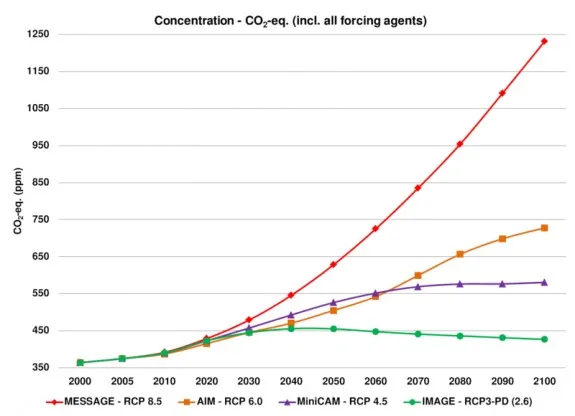Canadian Government Winds Down Research That Could Help Stop Climate Change
If carbon dioxide emissions don’t start dropping in the next few decades, we’re looking at hundreds of years of high temperatures
/https://tf-cmsv2-smithsonianmag-media.s3.amazonaws.com/filer/2013022703003802_27_2013_ccs.jpg)
If the pace of greenhouse gas emissions doesn’t slow, and even start to reverse, in the next few decades, then stopping the rising seas and climbing temperatures will become much, much harder. Aside from stemming emissions, one possible technological fix to balance the atmospheric concentration of carbon dioxide is carbon capture and storage—deliberately pulling carbon dioxide either from power plant exhaust or from the air and storing it in rocky formations underground.
You’d think governments around the world would be investing heavily in this technology, but instead, the Canadian government is shutting down a successful group that is working on carbon capture and storage. A pioneering Canadian research team who in November laid out the first guidelines for how to safely carry out carbon capture and storage is about to be shut down as its funding runs dry, says the CBC. Storing carbon underground is a tricky business, with worries being raised that the technique could cause earthquakes or that the carbon dioxide could leak back into the atmosphere. Though the team did provide a first set of guidelines, it’s fair to assume that our understanding of how to best carry out carbon capture and storage will evolve as research continues. The government of the Canadian province of Saskatchewan, who helped fund the project, seems to disagree.
Premier Brad Wall says the International Performance Assessment Centre for Geologic Storage of CO2 did some great work on setting standards.
But Wall says the work has been completed and he doesn’t think there’s a need to continue.
The Canadian team is not the only team working on carbon capture and storage. But, according to recent research set to be published in the American Meteorological Society’s Journal of Climate, carbon capture and storage may be one of our few remaining options to stave off the worst of global warming.

Led by Simon Fraser University’s Kirsten Zickfeld, this new research says that keeping global warming below 3.6 Fahrenheit—the goal of scientists and world leaders—is going to be pretty much impossible, unless we give it our all to switch to renewable energy sources and wean off fossil fuels. And our window for hitting that goal is running out—fast.
Of all the future emissions scenarios envisioned by the Intergovernmental Panel on Climate Change, only the most aggressive one, where atmospheric carbon dioxide peaks in 2040 and then starts to drop off, can keep the planet from heating up more than 3.6 F, according to the new research. For any other imagined scenario, the scientists say, we’re not just looking at a bit more warming. Rather, missing this target will bring with it a “climate commitment” where we will have trouble getting temperatures to substantially go back down for another 1,000 years or so.
Even if we completely cut off carbon emissions by the year 2300, we’ll still be dealing with the bulk of the warming we caused by the year 3000, they say:
At year 3000 atmospheric CO2 is still at more than half the year-2300 level in all EMICs for RCPs 4.5—8.5, with the fraction increasing with RCP scenario. Surface air temperature remains nearly constant or decreases slightly in all EMICs, with 85—99% of the maximum warming still persisting in the year 3000 for RCPs 4.5—8.5.
According to the scientists, one of the most important things we could do is to start deliberately pulling carbon dioxide out of the air.
estoring temperature to lower levels in a time frame meaningful to human societies can only be accomplished with “negative emissions” i.e. net removal of carbon dioxide from the atmosphere. Such negative emissions can be achieved, for instance, by biomass energy in combination with capture and geological storage of the emitted CO2, or by CO2 “scrubbers” which remove the CO2 directly from the atmosphere.
Zickfeld and colleagues write that they’re unsure whether “capture technology is feasible at the necessary scale” to help reverse global warming, suggesting that the work in figuring out carbon capture and storage really isn’t done—despite what the Canadian government says.
More from Smithsonian.com:
Climate Change Tipping Point: Research Shows That Emission Reductions Must Occur by 2020
/https://tf-cmsv2-smithsonianmag-media.s3.amazonaws.com/accounts/headshot/smartnews-colin-schultz-240.jpg)
/https://tf-cmsv2-smithsonianmag-media.s3.amazonaws.com/accounts/headshot/smartnews-colin-schultz-240.jpg)